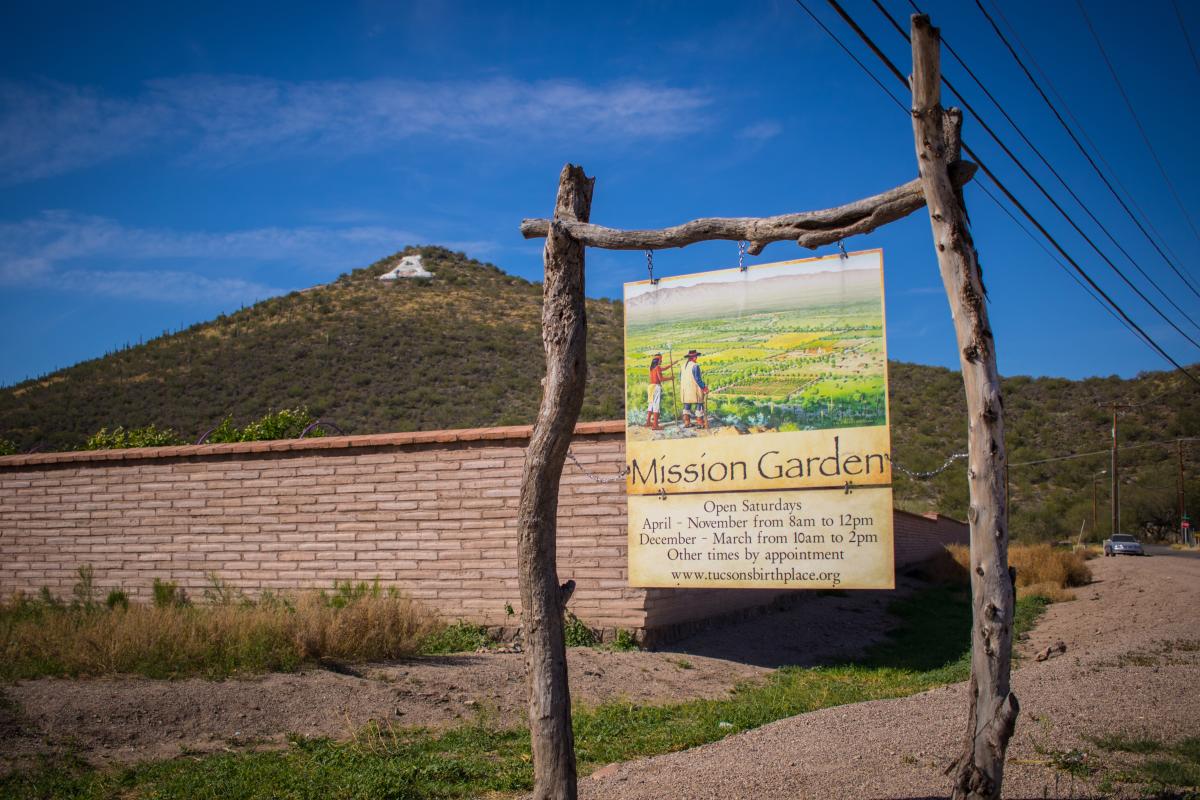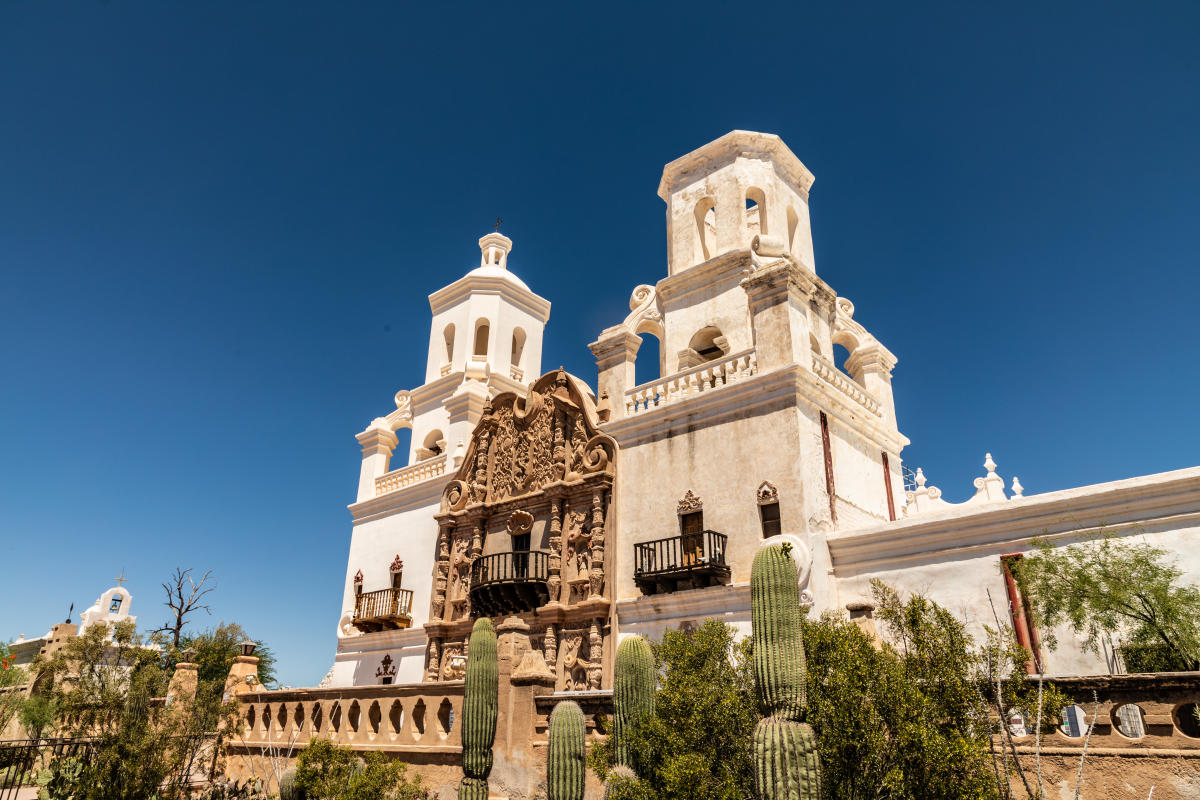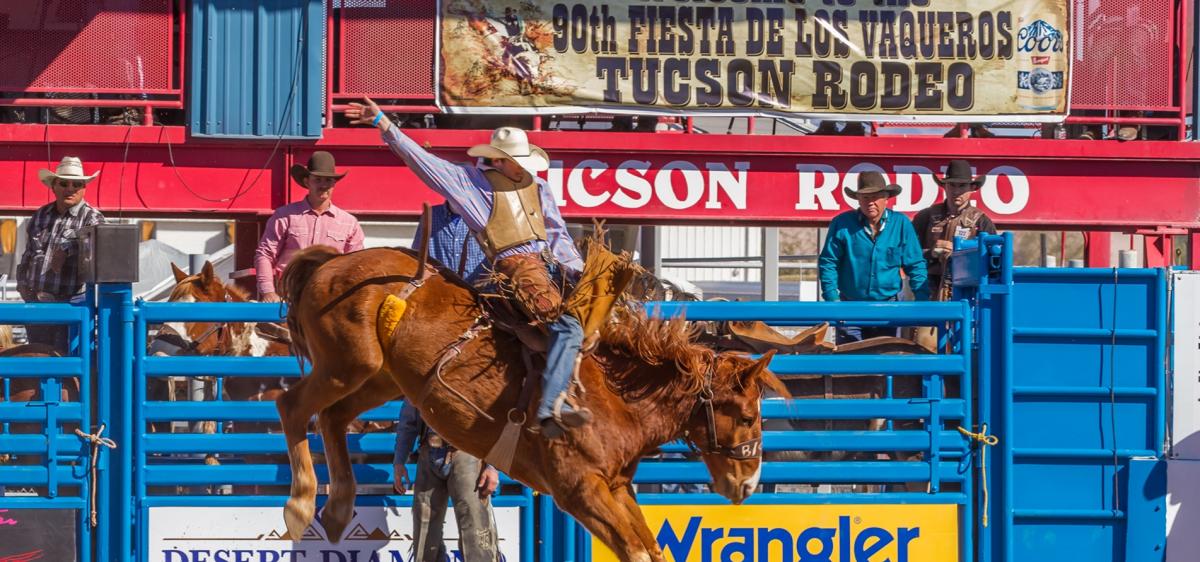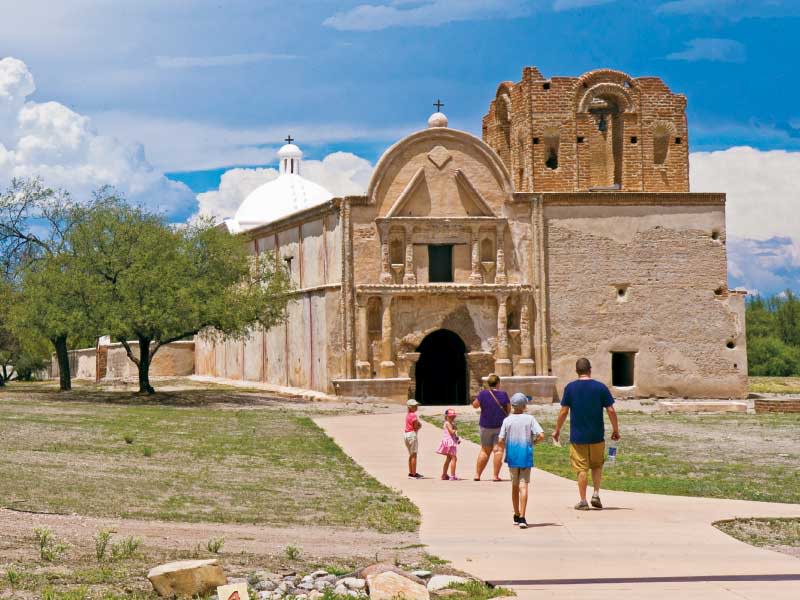Meeting at the Crossroads of Culture & Environment
When someone asks what Tucson is like, it’s not easy to come up with a consistent answer. Sometimes you’ll hear people start by saying it’s a place of incredible natural beauty, surrounded by five mountain ranges and a national park split in two. There are some who start with the food, pointing out that Tucson is the first UNESCO City of Gastronomy in the United States.
Others define the city by its art and culture—museums full of the area’s history, new murals around town defining a modern era of public art. It also wouldn’t be far off to say that Tucson is defined by wellness, a quest to better oneself, emotionally, spiritually, and physically.
All of these descriptions, however, center around the idea of geography; not just the physical properties and locations of places on a map, but how cultures connect with their environment. There’s something distinctive about the Tucson experience because there’s something distinctive about this part of the world, this part of the binational Sonoran Desert. It’s something you can’t help but find yourself connected with when you’re here.
In the eastern shadow of the Tucson Mountains, Mission Garden reflects that confluence perfectly—a living museum, a walkable catalog of what Tucsonans harvested, grew, and ate, even before Tucson was a city. More than 4,000 years of cultivation are on display here—the food of the Hohokam, O’odham, Spanish, Mexican, Chinese, Yaqui and the multicultural Tucson of today and tomorrow.
Mission Garden
Catch Interstate I-19 south to San Xavier Road and before you get to the White Dove of the Desert, Mission San Xavier del Bac, you’ll see some sheds and a fenced-in parking lot to the right. The San Xavier Co-Op Farm was established in 1971 to restore agricultural practices to the tribe. Stop by the store at the far end of the parking lot for a fascinating and delicious selection of ingredients and mixes, from made-for-the-desert tepary beans to soup mixes featuring cholla buds, which harvesters delicately pick each spring using tongs, bringing them back to the farm to be processed. And don’t forget to stop by for frybread in front of the mission!
Tepary beans are delicious (they make an excellent hummus, if that’s your thing) and a deep part of the historical Sonoran Desert diet, but so are the products of the agave plant—far beyond the tequilas and the mezcals you’re used to. The annual Agave Heritage Festival (presented by the historic Hotel Congress), held in the intersection of April and May, celebrates the various manifestations of the desert plant, quite a few of which end up in the form of alcohol.
Mission San Xavier del Bac
If you’re lucky enough on a Thursday night at Hotel Congress, you’ll catch local music legend Salvador Duran, stomping on a wooden box for percussion and emphasis, emoting his heart out en español, singing songs of longing and love. That’s part of the borderlands as well, the music that seems to be part of the city’s very soul. Yes, there’s Ronstadt and Calexico, but go further back to Lalo Guerrero, father of Chicano music and a product of Tucson. He’s immortalized with a colorful mural in the Barrio Viejo neighborhood where he grew up, not far from the streets of downtown where he once played the now demolished Plaza Theatre with his band.
Need more of a soundtrack to the borderlands? Try KOHN radio out of Sells. It’s tough to pick up in the city (although if you’re driving to Kitt Peak, you’ll catch it at 91.9 on your dial just fine), but you can find a stream online. The soundtrack to the Tohono O’odham Nation (and provider of public service info), KOHN jams the airwaves with waila (or chicken scratch, named for the look of dancers kicking their heels in the air), a dance music that started with acoustic fiddle groups and took on influences from Europe, bringing accordions and saxophones into the mix. It is ebullient music made for the dance floor—if you make it to the annual Waila celebration held in May at Desert Diamond Casino & Entertainment, you might find yourself kicking your heels up, chicken-style.
The cowboy story, extending beyond Tucson as a backdrop for John Wayne films, is part of our shared geography as well. La Fiesta de los Vaqueros Rodeo (and its accompanying parade) is so connected to our community that kids in local schools get days off in February. The first rodeo was held in 1925 with three days of competition. These days it lasts nine (and is one of the top professional rodeos in the country). If you’re not a professional bull rider, there are still ways to experience cowboy culture as hundreds of families do, some on a yearly basis: Southern Arizona’s guest ranches. Family-run guest ranches like Tanque Verde and White Stallion offer riding, roping and, most importantly, an experience no one will soon forget.
Tucson Rodeo Parade
There’s so much more connecting visitors—and residents—to this borderlands culture. Join in the westside tradition of appealing to the spirits for a plentiful monsoon season—the afternoon rains that all Tucsonans anticipate in the late summer—during Día de San Juan Fiesta. Explore Tucson’s museums celebrating our shared history, whether visiting the Arizona State Museum, which focuses on native history, or the Arizona History Museum (a short walk west) with shared stories from the Territorial era and beyond.
It’s a story that you can’t help but be a part of when you visit, beyond just a beautiful sunset shared on Instagram (although those are great, too). Thousands of years of people interacting with their Sonoran Desert geography, that’s a part of the memories you’ll be taking back with you.
Tumacacori National Historical Park
Santa Cruz Valley National Heritage Area
On March 12, 2019, a few lines of text within a public lands bill created the Santa Cruz Valley National Heritage Area (NHA) , an invisible line encircling more than 3,000 square miles in Southern Arizona. So, you might wonder, what does that mean? What makes this area worthy to be on the list of 55 such areas across 34 states?
The signing of the bill was a moment in the middle of a story in many ways—it represents the thousands of years of culture and history up to that point, and also the opportunity to tell those stories in the future and create new ways to experience everything that has sprung to life in the basin of the Santa Cruz River. National Heritage Areas give a community or region an opportunity to conserve, promote, and contextualize local heritage and what’s unique and interesting about a space and those who have lived there.
Historic Canoa Ranch
Want to experience some of what the Santa Cruz Valley NHA has to offer? Your existing plans probably already include aspects of the Santa Cruz Valley NHA. Mission San Xavier del Bac, one of Southern Arizona’s most photographed spots, reflects the culture of the Spanish missionaries of the 15th and 16th centuries, as does Tumacácori National Historical Park farther south. Taste the bounty of the area’s remarkable biodiversity from wines to heritage foods at places like Sonoita Vineyards and Agustín Kitchen. Take a bird walk at Historic Canoa Ranch. Walk the Juan Bautista de Anza National Historic Trail to retrace part of a 1,200 mile journey taken in 1775–76 to colonize the San Francisco Bay area.
If you’re taking in nature, enjoying a flavor you’ll only find in this corner of the Sonoran Desert, or learning more about the diversity of the people who have lived (and currently) live here, you’re a part of the Santa Cruz Valley NHA.





